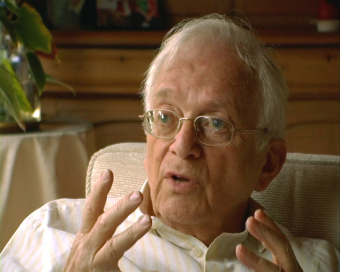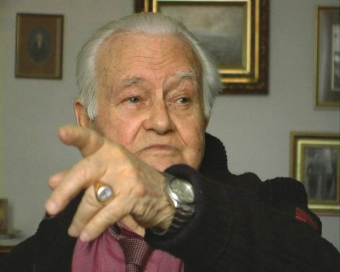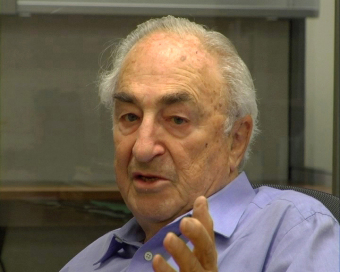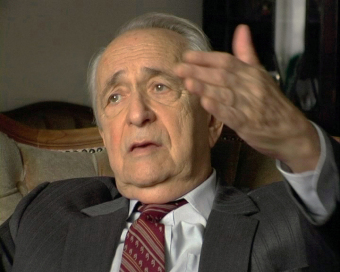Video Interviews with Buna/Monowitz Concentration Camp Survivors

© Fritz Bauer Institute

© Fritz Bauer Institute

© Fritz Bauer Institute

© Fritz Bauer Institut
“Instead of asking to what extent video testimony is to be construed as proof that particular events happened or to what extent they compel belief in a particular construction of events, we might look at that to which witness is actually being made: the manner in which survivor-witnesses have understood and expressed their experiences, the kind of understanding they now bring to such disaster, and the ways in which they now understand the world in light of the Holocaust.”[1]
At the center of the Norbert Wollheim Memorial are video interviews with survivors of the Buna/Monowitz concentration camp, men who were required to perform forced labor on the plant grounds of I.G. Farben in Auschwitz. Twenty-two of them agreed to participate in a conversation in front of the camera for the interview project of the Norbert Wollheim Memorial. Thanks to the assistance of the U.S. Holocaust Memorial Museum and the USC Shoah Foundation Institute, two additional oral-history interviews from the archives of those organizations could be included in the project.
In all their stories, the survivors tell about their childhood—the time before their persecution—their arrest and time in the camp, and their life after liberation. These three groups of themes occupy varying amounts of space in the edited films of the 24 interviews listed on this Web page, depending on the geographic, cultural, and social backgrounds of these men, their individual histories of persecution, and the focal points of their accounts. The uncut interview material is accessible on request in the Archive of the Fritz Bauer Institute.
The recollections and reports of these eyewitnesses do more than offer the viewers of the video interviews an opportunity to approach, at close range, the events of the Holocaust and different ways of remembering them and talking about them. The interviews also revolve around the break, the severing of ties, that was caused by the persecution and extermination of Europe’s Jews under National Socialism. The lively Jewish culture destroyed by the Holocaust, particularly in Central and East Europe, becomes visible in the interviews. Some survivors also illustrate this rupture through their language preference for the interview: while those deported from occupied areas chose their mother tongue (for example, French, Norwegian, or Serbo-Croatian), others opted for their “postwar language,” usually English or Hebrew: either because they no longer wanted to speak their mother tongue (especially if it was German), or out of consideration for children or grandchildren, so that they could watch the interview later on.
Only men were imprisoned in Buna/Monowitz, 90 percent of them of Jewish origin, along with Sinti and Roma and Polish political prisoners. The selection of the interviewees tries to mirror this: they grew up in every part of Europe, in diverse social settings, and now live in various parts of the world.
After liberation, the survivors of the Buna/Monowitz concentration camp usually were faced with a life in ruins: Almost always, their families had been murdered, they had virtually no schooling, and they suffered from the aftereffects of their imprisonment. For many, return to their countries of origin was difficult. German, Austrian, and Polish Jews often emigrated to the British Mandate of Palestine (later Israel) or to the United States. Only a few went back to the places where they had lived before the war. Many of them did not start to talk about their experiences until the late 1980s, when various organizations, especially in the United States (such as the Fortunoff Archive at Yale University or the USC Shoah Foundation Institute, as well as Yad Vashem in Israel), made a point of collecting personal accounts by survivors.
In our work on the Norbert Wollheim Memorial, the oral-history interviews with the survivors of the Buna/Monowitz concentration camp and their accounts hold a special status, a central place. We hope this will remain unchanged in future engagement with the Buna/Monowitz concentration camp and the materials made available in the Norbert Wollheim Memorial.
(SP/MN; transl. KL)
24 Interviews with Buna/Monowitz Concentration Camp Survivors
















